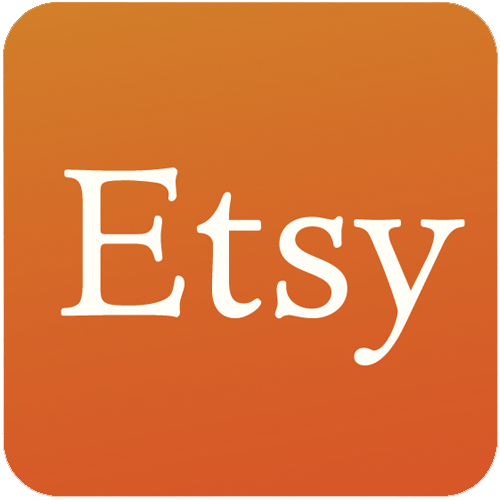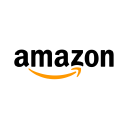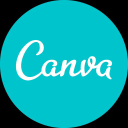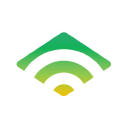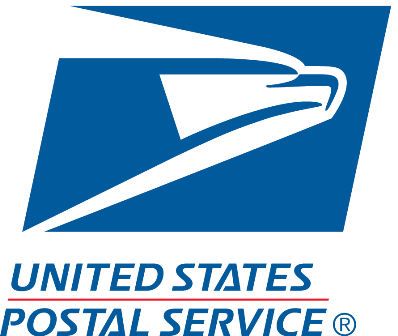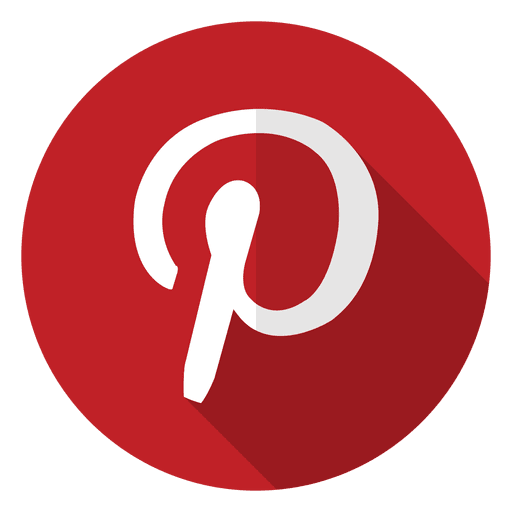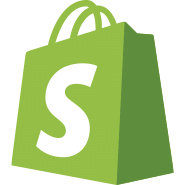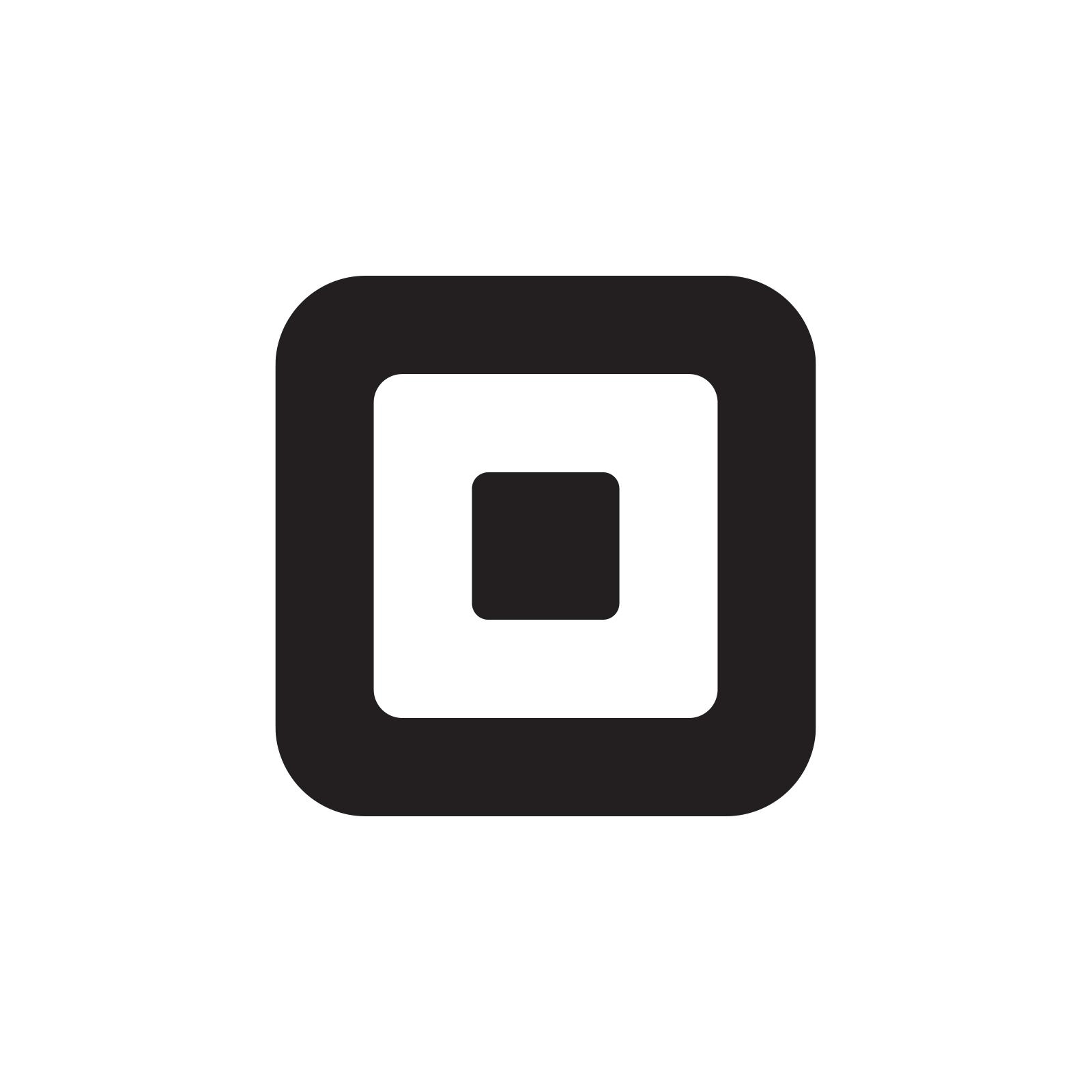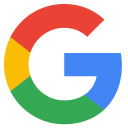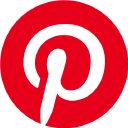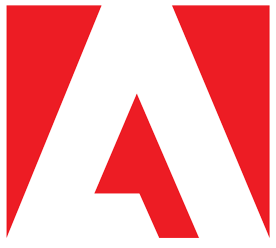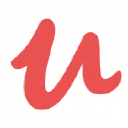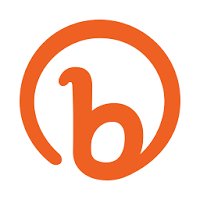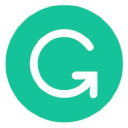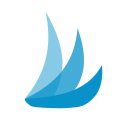My Online Stationery Shop Makes $6K/Month. Here's How I Built It
Hello! Who are you and what business did you start?🔗
I’m Kayla Hutchinson, and I am a self-proclaimed paper nerd running a stationery shop called Lucky Dog Design Co. I specialize in colorful greeting cards, stickers, notepads, art prints, and desk calendars that inspire and connect humans.
I’ve been running Lucky Dog since 2017 and make on average $6,000 per month through DTC and wholesale.

What's your backstory and how did you come up with the idea?🔗
While Lucky Dog started a little over 5 years ago, I truly believe it started at the age of 2. Every summer visiting my grandparents, my grandma and I would be neck-deep in crafts of all sorts. My favorite was handmaking papers and turning them into cards. I loved finding little scraps of glittery thread to weave in and colored lint from the dryer to dye the paper. My love for paper runs deep.
As I was in my 6th year of running a custom wedding invitation business, I was designing these cute little cards I would print out and send to my friends and family. I was having so much fun with them, and a few people had asked if they could buy some. So, from there, Lucky Dog was born. It took me a few weeks for the name to click, but it comes from the love my dog, Odin, has for mail, getting the mail, and sniffing every package, as well as me calling him “Lucky Dog” occasionally.
At the time, I was running my wedding invitation business while working for a nonprofit full-time. I was getting burnt out on the client work and loved creating and making with my hands, so greeting cards just stuck so much more to what I truly love and want to do. About 8 months later, I stopped wedding client work completely.
Don’t just give yourself an endless to-do list that seems daunting and undoable (and then defeating when you, of course, don’t finish it). Map out exactly what you can do and when then block out your distractions and get to work.
Take us through the process of designing, prototyping, and manufacturing your first product.🔗
Designing, prototyping, and manufacturing my first product was pretty easy for me (especially compared to all the complexities that go into making any type of product). I already had almost a decade of design experience, as well as 6 years in print design and paper experience in the business world. I printed all wedding invitations and stationery from home with an incredible printer, and I had already sorted out a paper mill as my paper manufacturer.
So weirdly, I was already ready for this. I kept (and still do keep) a running list of all of my card ideas that pop into my head - and back then, I didn’t have a release schedule for wholesale clients, so I just designed when the mood struck. I could print as I designed and as orders came in as a baby business, so startup costs were almost nothing.
Those looking to start a stationery business without any knowledge or equipment would have to learn how to design, how to prep files for print, and decide whether to print on their own or have someone do it for them. If they decided to do it themselves, they’d have to find a higher quality printer that could handle very large paper sizes and detailed, colorful prints - and then they’d have to learn the ins and outs of owning a printer like that. I already did that with my wedding stationery business, so I was a little ahead on this part of my business.
Describe the process of launching the business.🔗
My launch sucked - I’ll just say it right now. It took me a good 2-3 years to understand how to run and market a product-based business. And launching anything is still a work in progress for me personally.
I did a lot of things right, and a lot of things wrong. I immediately set up a Shopify store - that was a good start. In Lucky Dog’s first year, it was a stationery subscription box - not a full-fledged stationery store. I think I did this a bit backward, honestly. I should have started as a shop, then pushed subscription products. Subscriptions in 2017 were hard to manage, as there weren’t as many low-cost options for recurring payments.
There was a $50 monthly app on Shopify or nothing. Today, there are free to low-cost options which would make starting a subscription box much more affordable.
I had built a lot of personal buzz for my shop out the gate, so I had a lot of friends and family, and those three degrees from me, purchasing, but not many that I didn’t know. It took until I opened a full greeting card shop (about 5 months) for me to start seeing consistent, unrelated sales in my shop.
At the time, my day job was very underpaid, so I used a lot of my wedding business income to fund Lucky Dog, such as my website, related apps to run it, custom shipping boxes, large orders of paper, a major backlog of ink available at all times, and my email marketing platform.
Since launch, what has worked to attract and retain customers?🔗
I feel like I need to shout this from the rooftops (although there are a sea of people who already are): EMAIL MARKETING WORKS. Especially for product-based businesses (as that’s the only viewpoint I have). It’s important to understand your list and find out the right cadence and what kind of content they like most. For me, once every week or every other week, I send out one of three types of emails: promotional (a new product, a bestseller, a sale), content (new blog post, helpful tips, and resources), or behind-the-scenes. For DTC - this is where my customer retention strategy lives. I segment and treat my customers differently from everyone else on my email list. And how do I know what works and doesn’t work? Survey your email list and look at the analytics - the data will tell you more than your list will.
Another quick tip: consistently experiment and tweak your lead generation strategy. The ones I’ve found that work well is Instagram stories, order inserts for Etsy (because you can’t just automatically add them), and links at the bottom of my blogs. What I’ve found doesn’t work: paid advertising for lead gen (quality is so poor and not worth it) and pop-ups (which I learned from my Hotjar results - more on that below).
Something that I just started working on in January that I should have done at the start of my business is SEO. If I would have just hired someone at the very beginning, I can’t imagine where I’d be right now! My Google impressions have been 4x and my clicks have been 3x since I started working with someone. Search is my second largest revenue source for my website, second to email. In 2021 it looked like: Email, social media, paid to advertise, then search. I’ve gone away from paid advertising for a while, and social media is still a very strong revenue source.
A few tips I’ve learned along the way with SEO: Care about the little details. Your photo size, your photo file name, your alt text, your H1s and H2s, and meta descriptions and titles - those are all incredibly important and will move mountains in driving traffic to your site. Also, if you’re a product shop, make sure your products are connected and active in Google Shopping - 97% of my search revenue comes from Google Shopping results. The more properly placed keywords you have in your product titles and descriptions, the better you’ll show up!
How are you doing today and what does the future look like?🔗
One thing that works well for my business is diversifying my income. I’ve been on Etsy since 2011, so beyond keeping up with SEO, that platform seems on autopilot. It’s where most of my DTC orders come from, and I love that I’ve built my shop where Etsy does most of the work for me. My Shopify page is still ramping up. I started working with someone on my SEO in January 2022, and I’ve seen incredible progress and growth so far. My impressions are 4x what they were in January and clicks are 3x. Every month I’m seeing more and more growth and visibility through Google.
In wholesale, I have more than 40 shops I work with, and stock their shelves regularly. My wholesale strategy is strong - I outreach every week, I follow up every week, I check in on my clients regularly, etc. Halfway through 2022, I doubled my 2021 wholesale revenue. The two biggest learnings from this are to hire when you’re your bottleneck and to prioritize and nurture your current clients just as much as acquisition. I started 2022 with 20% of my revenue being wholesale, and it’s now around 60% (my goal for 2022 was 50%). I’m hoping the future is more along the lines of 80%.
I’m just now launching desk calendars, and in 2023 and beyond I will be adding notebooks/journals. I’m happy to say that as of this year, Lucky Dog is profitable - and I’ve seen an average 3.2x growth YOY. However, since I also work a full-time job and have a salary, I am incredibly lucky and privileged to put most of my profits back into my business. My thought is: I’m in a who-knows-how-long temporary space where I can afford to put it all back in and push my business forward and to its limits, so why wouldn’t I?
Through starting the business, have you learned anything particularly helpful or advantageous?🔗
Oh wow, how do I even keep this short? I feel like as business owners, there are so many learnings (even almost daily). So I’ll keep it to three!
First: When you are your bottleneck, outsource. One of the best things I’ve done for my business is outsourcing wholesale research. It took me so long to do my research and find shops across the country that were a good fit to reach out to. It was so time-consuming that I just wasn’t doing it. However, wholesale outreach has been the single most beneficial thing I’ve done in my business. When I hired a contractor to do this work for me, I started at 2 hours per week (what I could afford at the time, truly). I built up from there as I started getting more wholesale clients from this. The longer you wait as you’re the bottleneck, the more it will cost you.
Second: Keep trying, and keep failing. I invested thousands of dollars in products and time in the last 12 months building a shop on Amazon. I thought I did everything right, thought I did all the research and crunched the numbers. Only to find out at the end of the process that Amazon fees are ridiculous. Out of a $12 notepad, Amazon took almost $8 of it, and what I calculated through research was about $4. I ended up with thousands of dollars of products I couldn’t sell under my website, so added them to my Etsy shop. They are selling like crazy, and I’ve already made half of my investment back (with no sign of it stopping).
Third: Systems. Systems. Systems. If you don’t have systems in place, there’s a 100% chance that at some point, something is going to slip. You miss an important meeting, you forget all the steps to a product launch and you’re scrambling to make something work, you feel like you’re floundering around trying to figure out what’s important and what to do from the sea of ideas and tasks in your head. Having the right systems to help you helps get all of those tasks and ideas out of your head, and then helps you keep it organized. My systems have saved me more than 8 hours each week since I implemented them last October, and they have also allowed me to take nights off knowing I’ve done everything that I needed to.
With that, one of the biggest systems changes that helped me save time was planning out a realistic day. At the beginning of the day, get out of your calendar and have all meetings blocked. Then, mark your breaks, walks, etc. on your calendar. Whatever you have less is your available time for work. Don’t just give yourself an endless to-do list that seems daunting and undoable (and then defeating when you, of course, don’t finish it). Map out exactly what you can do and when then block out your distractions and get to work.
What platform/tools do you use for your business?🔗
I use WordPress for my main website, built with a Divi theme builder. For my shop, I use Shopify with apps such as PayWhirl Subscription Payments, Product Reviews, Shopify Collabs, Klaviyo, and Quick Announcement Bar - Hextom. PayWhirl is a free to low-cost subscription payment app on Shopify and not only are they very affordable, but they have amazing customer service. I also use other e-commerce platforms, such as Etsy, Faire, Handshake, Tundra, and Abound. Out of all of the wholesale marketplaces listed, Faire is by far the most profitable for my business.
My best friends in my tech stack are Hotjar, Google Analytics (with e-commerce enabled), Google Search Console, Microsoft To Do, Google Workspace, Adobe Creative Suites (Illustrator, InDesign, PhotoShop, Fresco, and Adobe Express are the most used), Klaviyo, and HARO. Hotjar is so creepy watching exactly what the visitors do on my website, but it is incredibly valuable to know how a person reacts to your site and products. You’ll discover problems you didn’t even know were problems.
What have been the most influential books, podcasts, or other resources?🔗
Hands down - the one resource/company that has propelled my business forward is Proof To Product. I’m a part of the LABS community and took the Paper Camp course. From both of those alone, my revenue tripled the month after implementing all of the information in the course, and I’ve developed a strong and helpful relationship with my wholesale clients. I’m less floundering around in the wholesale world, and more taking it for myself and knowing what to do and how to do it. For any product-based business - this community and gold mine of a resource is EVERYTHING.
A few of my favorite business-focused podcasts are: Deliverability Defined, Elevated Visibility with Nina Gibson, Proof to Product, The Side Hustle Show, and The Best Today Podcast.
Measure What Matters by John E. Doerr is one of the best business books I’ve read in a while with a lot of great takeaways for every size company.
Advice for other entrepreneurs who want to get started or are just starting out?🔗
Give yourself space. In 2018, I burned out so devastatingly that I did not create for 2 years. I ran my shop and fulfilled orders, but didn’t create anything new at all. I gave myself space, worked with a trained and certified business coach, and slowly worked myself back to a healthy balance. Now I can tell when a burnout may be coming, but I also have lots of preventative measures: taking every Friday off, saying yes to everything I love (and being flexible when I need to move business items and deadlines around), random nights off to play video games with my husband, taking at least one walk a day, and cooking a good dinner at least 5 times per week. When I feel burnout on the horizon, I take stock of my absolute have-to-dos, push everything else off, and take time off from my business. You taking time for yourself saves you so much time and money in your future. I have a metaphorical mile-long stack of medical bills, therapy bills, and missed moments that are from when I’ve been burnt out.
Don’t do whatever everyone else is doing. How are you going to be seen if you’re doing the same marketing tactic as thousands of others? If you’re hearing something that is along the lines of “this is how it’s done,” seriously consider why that is. Typically if someone is trying to tell you the one-size-fits-all cookie-cutter foolproof way of doing something, everyone else is doing it as well. Step out of the crowd and make your own decisions. However, don’t confuse that with learning a new skill.
And on that note - if you want to learn a new skill - do it (and give yourself the space to do it). Carve out consistent time to practice. I started my business with experience and love with typography and graphic design, but no skill whatsoever in illustration. I’ve spent one hour every week (mostly, and at least) for two years practicing this skill. Now, almost every card I design (that isn’t 100% just text) is illustrated by me. I’m now on to two other hobbies/skills I’m learning: Handlettering and embroidering on paper (embroidery is a much loved hobby of mine).
Where can we go to learn more?🔗
If you have any questions or comments, drop a comment below!

Download the report and join our email newsletter packed with business ideas and money-making opportunities, backed by real-life case studies.

Download the report and join our email newsletter packed with business ideas and money-making opportunities, backed by real-life case studies.

Download the report and join our email newsletter packed with business ideas and money-making opportunities, backed by real-life case studies.

Download the report and join our email newsletter packed with business ideas and money-making opportunities, backed by real-life case studies.

Download the report and join our email newsletter packed with business ideas and money-making opportunities, backed by real-life case studies.

Download the report and join our email newsletter packed with business ideas and money-making opportunities, backed by real-life case studies.

Download the report and join our email newsletter packed with business ideas and money-making opportunities, backed by real-life case studies.

Download the report and join our email newsletter packed with business ideas and money-making opportunities, backed by real-life case studies.

